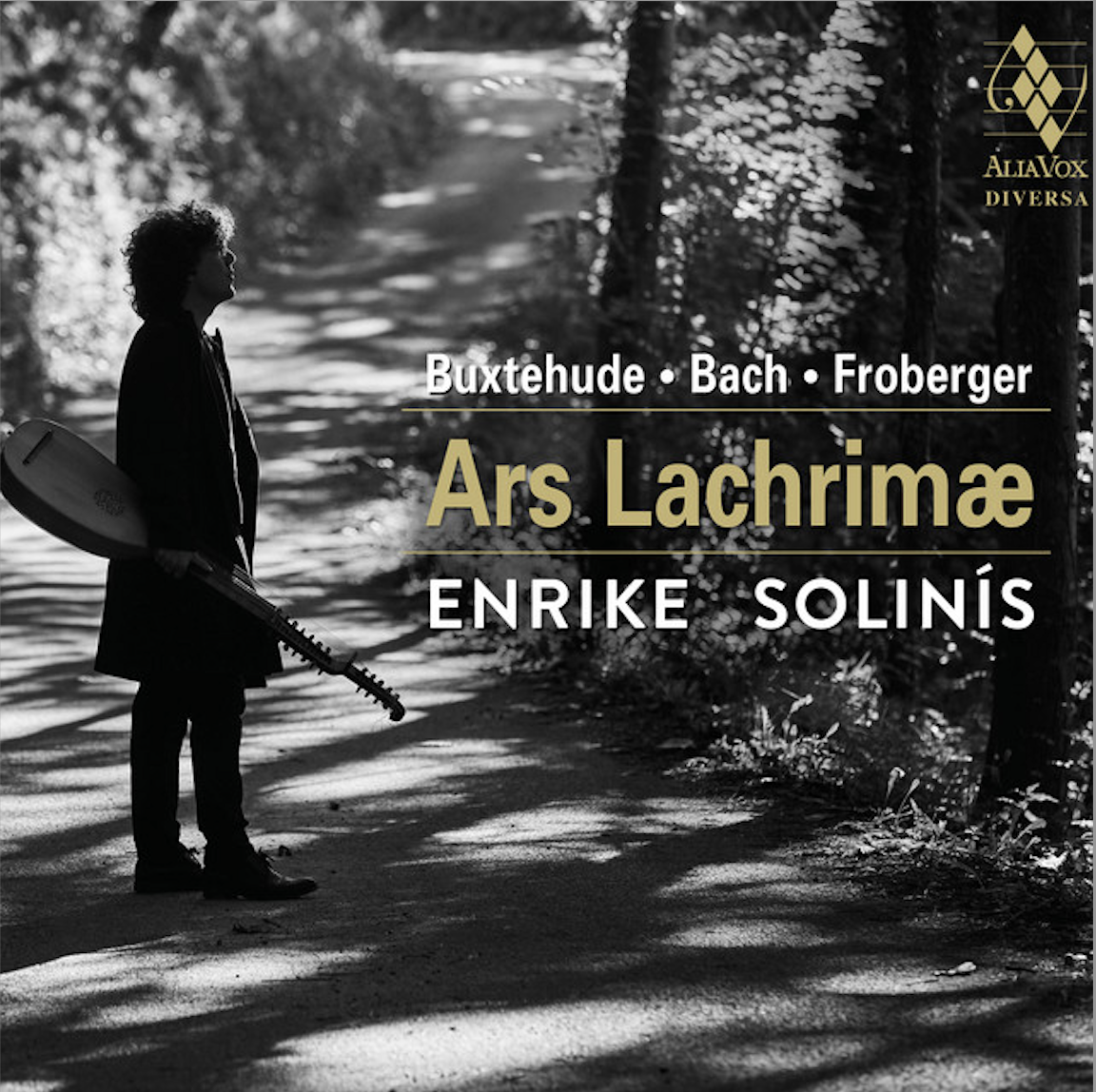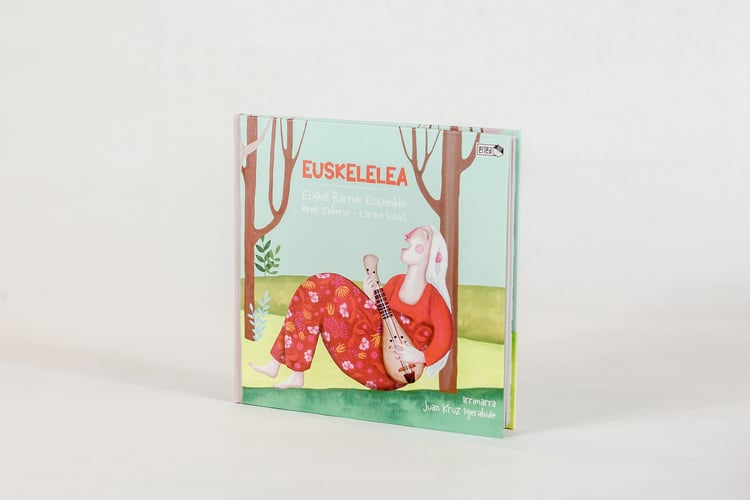ARS LACHRIMÆ - The CD
ARS LACHRIMÆ
Sonata in C minor, BWV 1003/964 – J.S. Bach (1685-1750)
1. Grave 4’46
2. Fuga 8’13
3. Andante 5’43
4. Allegro 6’25
Suite No. 18 in G minor, FbWV 618 – J.J. Froberger (1616-1667)
5. Allemande 3’50
6. Courante 1’35
7. Sarabande 2’51
8. Gigue 1’41
Suite in D minor, BuxWV 236 – D. Buxtehude (1637-1707)
9. Allemande 3’51
10. Courante 2’10
11. Sarabande 2’26
12. Gigue 1’54
Suite in C minor, BWV 997 – J.S. Bach (1685-1750)
13. Prelude 4’06
14. Fugue 6’18
15. Sarabande 4’24
16. Gigue & Double 7’01
Enrike Solinís
Baroque Lute & Archlute
Recorded in September 2021 at Azkarate Church (Navarre, Spain) by
Jonan Ordorika and Jordi Gil.
Mastering and mixing: Sputnik Estudio (Jordi Gil), Seville
Production: Enrike Solinís and Miren Zeberio
TEXTS IN BASQUE, SPANISH, FRENCH, ENGLISH
ARS LACHRIMÆ
The title of this programme, Ars Lachrimæ, first references the masterful and inspired pavane by John Dowland. Aesthetically, it deeply reflects on musical affections, a mirror and paradox of human nature. The piece epitomises how the rich Renaissance musical tradition poured its final whims into the lute and how composers, such as the English Dowland, endowed their instrument with a unique musical character and idiom. Subsequent composers, although not expert lute players themselves, used this character as a catalyst for their creativity: an intimate, sweet and melancholic pathos, which can be traced back to its arrival in southern Europe from the hands of the Arab musicians of the Iberian Peninsula.
Plucked string instruments, with their ephemeral sound, have always vividly conveyed the fleeting spirit of each era: faithfully accompanying the exiled warrior, soothing the laments of the spurned lover, but also elevating their festive sense to the point of absurdity. Their players have formed, for centuries, a selected guild of musicians capable of sheltering great ideas from the solitude of their small instrument. Their transformative and whimsical idealism wanted to claim the most inspired works of each period through the art of adaptation, attracting to their world authors seemingly alien to the instrument like Händel, Domenico Scarlatti or even Johann Sebastian Bach himself.
Another unique feature of the lute is its vast array of models, variants, and tunings, which have coexisted throughout its long history. As a result, the choice of a specific instrument is a significant interpretative decision. In my opinion, especially considering the keys chosen by Johann Sebastian Bach for his main works for the lute (such as BWV 995, 997, and 999), the ideal instrument to play his music is the lute with the most conventional historical tuning, that is, the Renaissance lute: G, D, A, F, C... This lute is, by definition, the domestic lute of Baroque Europe. With Bach's music in hand, it's easy to think that even if he wasn't specifically a professional lutenist, he did play it with some skill and knew the instrument's intricacies well enough to write for it pieces that are relatively easy to perform.
ENRIKE SOLINÍS
Unter Solinís Fingern auf Erzlaute und Barocklaute bekommt die musizierende Haltung der Innenschau und des Nachdenklichen in diesem Repertoire großes Gewicht. Seine stille Eleganz und Mühelosigkeit der Darbietung ist dabei getragen von einer atemberaubenden technischen Präzision. Man höre allein, wie gestochen scharf er die Triller setzt, bei gleichzeitig samtweichem Verklingen. Und so ist man beglückt, dem baskischen Lautenisten eine Stunde der süßen Schwermut lang einfach nur lauschen zu dürfen.
Enrike Solinís: “Hay que ser esclavo de la música, no de la partitura."
Eduardo Torrico - Manuel de Lara Ruiz
"Ars Lachrimae", l'últim disc del virtuós instrumentista de corda polsada Enrike Solinís. Editat per Alia Vox, el disc està integrat per obres de Johann Sebastian Bach, Johann Jakob Froberger i Dietrich Buxtehude. Enrike Solinís sempre s'ha sentit atret per la música de diferents cultures, regions i èpoques, i ha reflectit aquesta diversitat en la seva personalitat musical, que juntament amb la seva capacitat tècnica i expressiva fa que molts el considerin un dels principals.
Enrike Solinís “Es más moderno escuchar música antigua que reguetón.”



















